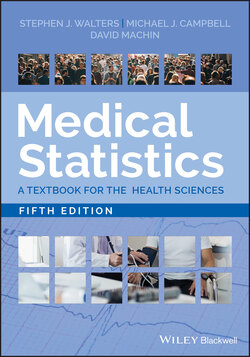Читать книгу Medical Statistics - David Machin - Страница 90
Why Should One Use the Odds Ratio?
ОглавлениеThe calculation for an OR may seem rather perverse, given that we can calculate the relative risk directly from the 2 × 2 table and the odds ratio is only an approximation of this. However, the OR appears quite often in the literature, so it is important to be aware of it. It has certain mathematical properties which render it attractive as an alternative to the RR as a summary measure. The OR features in logistic regression (see Chapter 10) and as a summary measure for case‐control studies (see Section 14.8). An example where the authors quote an odds ratio is given below.
One point about the OR that can be seen immediately from the formula is that the odds ratio for failure as opposed to the odds ratio for success in Table 3.3 is given by OR = bc/ad. Thus, the OR for failure is just the inverse of the OR for success.
Thus in the corn plaster trial, the odds ratio for the corn not healing or resolving at three months in the plaster group compared to the scalpel group is (20 × 63)/(32 × 74) = 0.532; which is the same as the reciprocal or inverse of the odds ratio for the corn resolving at three months in the plaster group compared to the scalpel group or 1/1.879 = 0.53. In contrast the relative risk ratio for the corn not healing or resolving at three months in the plaster group compared to the scalpel group (1 − 0.337)/(1 − 213) = 0.842, which is not the same as the inverse of the relative risk for the corn resolving at three months in the plaster compared to the scalpel group, which is 1/1.583 = 0.632. This symmetry of interpretation of the OR is one of the reasons for its continued use.
